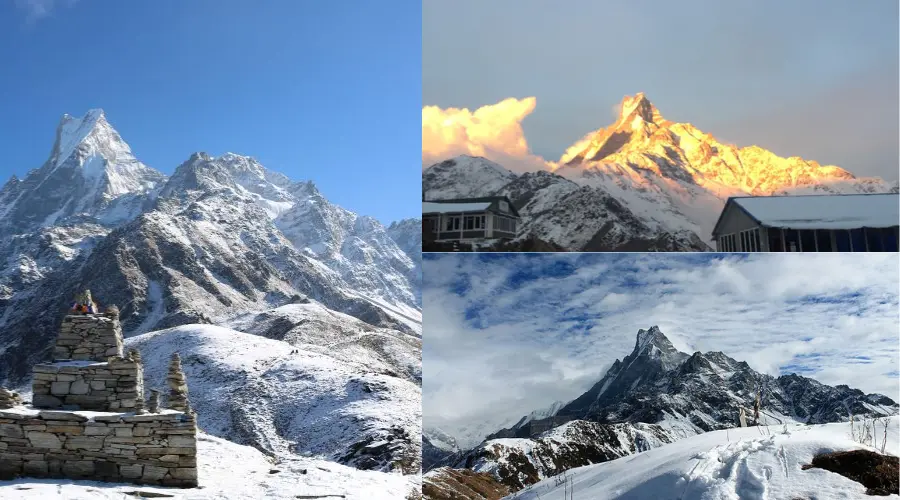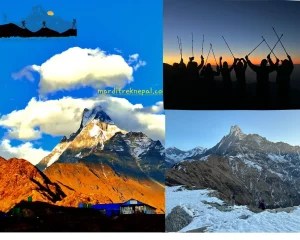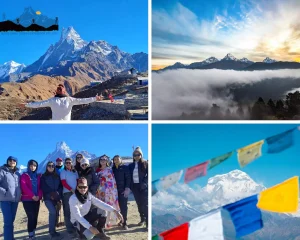Hello, Adventure Freaks!
Wondering which is the best time to visit Mardi Himal?
Embarking on the Mardi Himal Trek in December might seem like a bold choice, but it offers a unique blend of adventure and tranquility. Located in the heart of the Annapurna region of Nepal, this trek is ideal for those looking to escape the bustling trails of its more famous neighbors, like the Annapurna Base Camp trek. The serenity of winter trekking in December provides a magical experience, with snow-capped peaks and peaceful trails.
Let’s explore more about the Mardi Himal trek in December.
Why Choose the Mardi Himal Trek in December

Winter in Nepal is a captivating time, offering clear skies and crisp mountain air. Trekking in December allows you to witness the raw and pristine beauty of the Himalayas without the throng of other trekkers. The solitude of the paths during this month enhances the spiritual connection with nature that many hikers seek. The Mardi Himal Trek is especially appealing for those who relish a quieter path, providing an opportunity to connect deeply with nature.
Trekking in December also offers a unique perspective on the landscape. The trail’s fewer distractions allow trekkers to immerse themselves fully in the experience, appreciating the subtle sounds of nature and the breathtaking vistas. Additionally, for the photography enthusiast, the low angle of the winter sun casts an enchanting glow over the mountains, creating perfect photographic opportunities.
For those concerned about safety, trekking in December can be quite secure, provided you are well-prepared. The key lies in understanding the challenges and preparing adequately, ensuring that your adventure is both safe and enjoyable.
The Magic of the Winter Landscape
One of the most significant advantages of the Mardi Himal Trek in December is the opportunity to witness the landscape transformed by winter’s touch. The snow-covered trails and frost-kissed trees create one of the most picturesque settings for nature lovers. As you ascend the trail, the snow underfoot adds a delightful crunch, a constant reminder of the season’s presence. Plus, the views of the Annapurna range, Machapuchare, and other majestic peaks are simply breathtaking in the clear winter light.
A Season of Peace and Reflection
The winter months also bring a sense of quiet and stillness to the mountains. This tranquility allows trekkers to reflect and find peace amidst the breathtaking scenery. The trails are less crowded, providing a more intimate experience with the Himalayan wilderness, making it the best time for trekking to Mardi Himal for solitude seekers.
Wildlife and Nature During Winter
Moreover, winter trekking offers the chance to witness the unique adaptations of local wildlife and flora. The hardy plants and animals that survive in these conditions showcase nature’s resilience, adding another layer of interest to your journey.
Embracing the Off-Season Experience
Choosing the Mardi Himal Trek in December is a step away from the conventional trekking seasons. It offers a chance to experience the Himalayas in a way that few others do. The path less traveled often leads to more profound discoveries, both of the landscape and within oneself. This off-season trek offers a perfect blend of challenge and reward, promising an adventure that breaks the monotony of everyday life.
Spiritual and Personal Growth on the Trail
The peacefulness of the winter trek allows for personal introspection and growth. Each step taken in solitude becomes a meditation, helping trekkers find clarity and purpose. Furthermore, the mutual trust among fellow adventurers is often stronger during the off-season, as shared challenges forge deeper connections.
The uniqueness of the Mardi Himal Trek in December lies in its ability to surprise and delight. The landscape, though familiar, reveals new facets in the winter light, and every day brings a fresh perspective on the grandeur of the Himalayas.
Weather and Temperature in December
Trekking in December in the Himalayas means colder temperatures, especially at higher altitudes. Daytime temperatures can be quite pleasant, ranging from 5-10°C (41-50°F), but nights are cold and can drop to -15°C (5°F), often dropping below freezing. The crisp air is invigorating, adding to the sense of adventure. It’s essential to prepare for winter conditions with appropriate gear to ensure comfort and safety throughout the trek.
Weather conditions in Mardi Himal can also vary significantly depending on the altitude and time of day. In the lower regions, trekkers can enjoy mild daytime temperatures, but as they ascend, the chill becomes more pronounced. This variation requires careful planning and flexibility, allowing trekkers to adapt to changing conditions.
Coping with Shorter Daylight Hours
One of the key challenges of winter trekking is the shorter daylight hours. Planning the trek to make the most of daylight is crucial, ensuring that you reach your destination before nightfall. Despite the challenges, the winter landscape offers rewards that are well worth the effort.
Essential Gear for Trekking in December
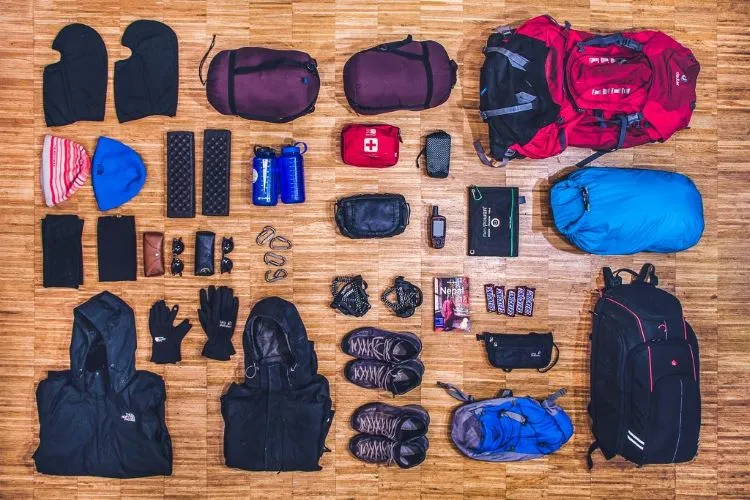
Efficient packing during the Mard Himal trek is crucial. To tackle the winter chill, layering is key. Bring thermal wear, a down jacket, and waterproof outer layers. Layering allows trekkers to adjust their clothing to the varying temperatures and activity levels encountered on the trail. A good pair of trekking boots, warm gloves, a hat, and sunglasses are also necessary. Don’t forget a sleeping bag rated for sub-zero temperatures, as teahouse accommodations can be quite basic.
Packing efficiently yet thoroughly is an art. Space and weight are limited, so each item must serve a purpose. High-quality gear can make the difference between a comfortable trek and a challenging experience. Accessories like a neck gaiter, gaiters for boots, and trekking poles can also enhance comfort and safety.
It’s also wise to carry basic repair kits for clothing and equipment, as well as a small first-aid kit to handle minor injuries or ailments. Being well-prepared means you can focus on enjoying the trek rather than worrying about equipment failures or discomfort.
Teahouse Accommodation on the Mardi Himal Trek
Teahouse accommodations along the Mardi Himal Trek are basic but welcoming. These establishments provide a warm meal and a place to rest after a day on the trail. While the facilities might not be luxurious, the cozy ambiance and opportunity to meet fellow trekkers add to the overall experience.
Food and Meals on the Trail
Meals in teahouses are typically simple but hearty, offering a taste of local cuisine. Dishes like dal bhat provide much-needed energy for the trek. It’s important to carry some snacks for the trail, as energy levels can fluctuate with the demands of hiking in colder temperatures.
Understanding the limitations of teahouse accommodations helps set realistic expectations. The focus is on the adventure and the natural beauty of the Himalayas rather than luxury. Embracing this simplicity is part of the trek’s charm.
Detailed Mardi Himal Trek Itinerary
The Mardi Himal Trek is one of the short treks in Nepal, typically completed in 5-7 days. Here’s a detailed overview of the itinerary:
Day 1: Pokhara to Kande to Pothana
Begin your journey from Pokhara, driving to Kande. This initial leg of the journey offers stunning views of the countryside, setting the stage for the adventure ahead. From Kande, it’s a moderate hike through lush forests to Pothana. The trek is about 3-4 hours long, a perfect warm-up for the days ahead.
As you trek, the vibrant colors of the forest contrast beautifully with the winter sky. The path is well-defined, making it an enjoyable start to the trek. Pothana, your first stop, offers panoramic views of the Annapurna range, a tantalizing glimpse of what’s to come.
Acclimatizing to the altitude and the pace of trekking is crucial at this stage. Taking time to enjoy the scenery and adjust to the environment helps set a positive tone for the days ahead.
Day 2: Pothana to Forest Camp
Today’s trek takes you deeper into the forest, with rhododendron trees towering above. The path is enchanting, especially when dusted with snow. Expect to trek for about 6-7 hours, reaching Forest Camp in time for a cozy evening. The gradual ascent offers a chance to observe the changing flora and fauna, with each step bringing discoveries.
The forest offers a serene environment, its stillness broken only by the sounds of nature. The dense canopy provides shelter from the elements, creating a microcosm of tranquility. As you trek, the sense of adventure builds, fueled by the anticipation of what’s to come.
Reaching Forest Camp offers a sense of accomplishment and a chance to unwind. The camaraderie among trekkers often leads to shared stories and laughter, making for a memorable evening.
Day 3: Forest Camp to High Camp
As you ascend, the landscape changes, offering more open views of the surrounding mountains. The trek to High Camp is a bit challenging but rewarding, taking about 5-6 hours. The panorama from High Camp is awe-inspiring, with unobstructed views of Mardi Himal and Machapuchare.
The climb is invigorating, each step revealing more of the majestic peaks that dominate the skyline. The trail becomes steeper, testing endurance but also providing ample opportunities for rest and reflection. The sense of achievement upon reaching High Camp is immense, with the breathtaking views serving as the perfect reward.
High Camp is a place of wonder, where the vastness of the Himalayas is truly felt. The clear night skies offer a celestial display, adding to the magic of the experience.
Day 4: High Camp to Mardi Himal Base Camp and Back
This is the highlight of the trek. An early start is recommended to catch the sunrise over the Himalayas. The trek to Base Camp is steep but offers unparalleled views. The effort required is significant, but the sight of the sun illuminating the peaks is unforgettable. After soaking in the vistas, return to High Camp for the night.
The journey to Base Camp is a test of endurance and determination, but the rewards are immense. The sense of isolation at Base Camp enhances the feeling of being at the edge of the world. The descent back to High Camp offers a chance to reflect on the journey and the majesty of the landscape.
The evening at High Camp is a time for celebration, marking the culmination of the trek’s most challenging day. The shared experience creates bonds among trekkers, adding to the richness of the adventure.
Day 5: High Camp to Siding Village
Begin your descent towards Siding Village, a traditional Gurung settlement. The trek down is easier and takes about 6-7 hours. The trail winds through diverse landscapes, offering a different perspective on the region’s beauty. Enjoy the hospitality and culture of the local community, experiencing firsthand the warmth and generosity of the Nepali people.
The descent is a time for reflection, the memories of the trek still fresh. The changing scenery provides a gentle transition back to the comforts of civilization. Siding Village offers a glimpse into traditional life, with its cultural richness adding depth to the trekking experience.
The evening is a time for relaxation and gratitude, savoring the final moments of the trek amidst the welcoming community.
Day 6: Siding Village to Lumre and Drive Back to Pokhara
The final day of the trek involves a leisurely walk to Lumre, where a vehicle will take you back to Pokhara. The trek’s end is bittersweet, a mix of satisfaction and the desire for more. Reflect on your journey through the stunning landscapes of the Annapurna region, cherishing the memories and the personal growth achieved.
The return to Pokhara is a chance to unwind and celebrate the trek’s success. The vibrant city offers a stark contrast to the tranquility of the mountains, providing a diverse end to the adventure. The memories of the trek linger, a testament to the beauty and challenges of the Himalayas.
The Mardi Himal Trek is more than just a physical journey; it’s a voyage of discovery and connection with nature, leaving a lasting impact on those who undertake it.
Health and Safety: Managing Altitude Sickness
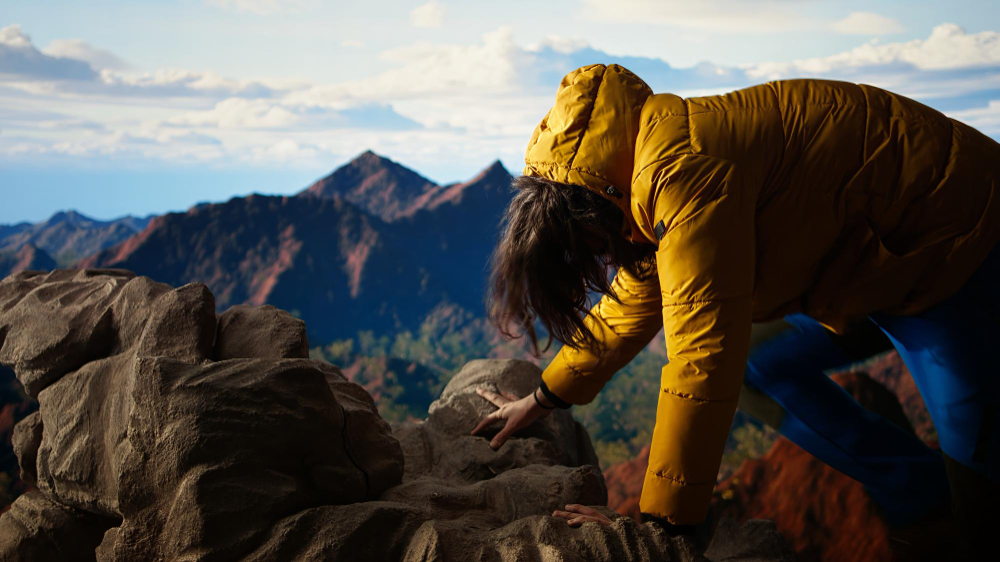
Altitude sickness can be a concern, even on a shorter trek like Mardi Himal. Take your time, hydrate well, and listen to your body to minimize risks. Gradual acclimatization is crucial to enjoying the trek and reaching your goals without health issues.
Understanding the symptoms of altitude sickness and knowing when to seek help is important. Simple measures, like resting and drinking plenty of fluids, can prevent complications. Taking it slow and steady is key to a successful trek.
Pre-trek preparation, such as spending time at higher altitudes before the trek, can also aid in acclimatization. This foresight ensures that you are physically and mentally prepared for the challenges ahead.
Staying Updated on Weather Conditions
The weather in the mountains can be unpredictable. Check forecasts regularly and be prepared to alter your plans if necessary. Staying informed helps you make decisions that prioritize safety and enjoyment.
Having a flexible itinerary allows you to adjust to changing conditions. Being prepared for sudden weather changes, such as snowstorms or cold snaps, ensures that you can continue your trek safely.
Technology can be a valuable tool for staying informed. Apps and local resources provide real-time weather updates, helping you plan your days efficiently and effectively.
Cultural Awareness and Responsible Trekking
Nepal is rich in cultural diversity. Respect local traditions and communities, and remember to leave no trace of your visit. Understanding and honoring local customs enriches your trek and fosters positive interactions with the communities you encounter.
Engaging with locals respectfully opens doors to cultural exchanges and learning opportunities. Sharing stories and experiences with the local people enhances the trek’s richness and depth.
Sustainable and Eco-Friendly Trekking Practices
Practicing sustainable tourism by minimizing your environmental impact ensures that the trails and communities remain pristine for future trekkers. Small actions, like carrying out all waste, make a big difference.
Final Thoughts: Why Trek Mardi Himal in December
The Mardi Himal Trek in December is an extraordinary adventure. It combines the thrill of winter trekking with the serene beauty of the Himalayas. Whether you’re a seasoned trekker or a novice seeking a new challenge, this trek offers a unique experience that will leave you with lasting memories. So pack your bags, lace up your boots, and get ready for an unforgettable journey through one of Nepal’s hidden gems.
The trek offers a chance to step away from the everyday, embracing the challenges and rewards of winter trekking. Each moment spent in the Himalayas offers a new perspective, a reminder of nature’s majesty and the human spirit’s resilience.
As you reflect on your journey, you’ll find that the Mardi Himal Trek is more than just a physical challenge. It’s a journey of self-discovery, a chance to connect with the natural world, and an opportunity to experience the warmth of the Nepali people and culture.
FAQs
Is December a good time to trek in Nepal?
Yes, December is an excellent time to trek some of the shorter treks in Nepal, including Mardi Himal, Ghorepani Poon Hill, and Khumai Danda Trek. During this month, the weather is likely to be clear with shiny white snow spread over the trail, making it the most beautiful time to trek.
What is the weather like in Mardi Himal in December?
The weather at the Mardi Himal base camp throughout the winter is as follows:
– Snowfall is expected at higher elevations in December
– Daytime temperatures at base camp range between 5 and 10 degrees Celsius (41 and 50 degrees Fahrenheit)
– Nighttime temperatures at high camp can dip to -15 degrees Celsius (5 degrees Fahrenheit)
Which month is best for Mardi Himal Trek?
Spring and autumn provide some of the most stunning Mardi Himal weather conditions, with clear sky and good mountain visibility. If you’re searching for a challenging, peaceful, and gratifying experience, winter is the time for you.
Can I complete Mardi Himal trek in 3 days?
Yes, it is possible ot complete the Mardi Himal trek in 3 days from Pokhara. However, the itinerary will be more rushed, where you need to walk for an average of 9 to 12 hours a day.
What does Mardi Himal Trek cost depend on?
The cost of the Mardi Himal trek depends on various factors of the Trek, including:
– Group size (Larger group means lower per-person cost)
– Season Selection (Peak Season or Off Season)
– Service Expected (Budget and Luxury Options available)
– Starting Point (Kathmandu or Pokhara)
– While some of the travel agencies are flexible with their cost, others are strict on their price.


